Video Switch for TV
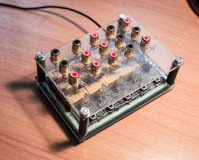 My friend loves old consoles: Dendy, Sega, PS, etc. However, when there are many consoles, and one TV, there is a problem of constant switching. Therefore, for my birthday, I decided to make a gift for him with my own hands.
My friend loves old consoles: Dendy, Sega, PS, etc. However, when there are many consoles, and one TV, there is a problem of constant switching. Therefore, for my birthday, I decided to make a gift for him with my own hands.China offers switches , circuit solutions often use expensive or rare in our region chips RF switches. And I decided to show originality and make a switch on electromagnetic relays. The advantages of the relay are obvious: galvanic isolation; as well as minuses: the consumed current. Initially, I wanted to make switching using a relay, and control on TTL logic, but only 12V relays were available. I was too lazy to do two power supplies, matching, therefore, I also made the logic of switching on the inputs to the relay. Thus, we got a switch assembled completely on a relay, without microcontrollers and even logic chips.
Scheme sketched literally 20 minutes in Proteus. From the diagram it is clear that the number of relays, and hence the inputs can be increased to the desired number. I decided to stop at four. One job requires a relay with two contact groups. It will be fully occupied by "logic". The algorithm is simple: by pressing a button we turn on the relay, which will continue to be in self-holding mode. That is, the initial current is supplied by the button, and after switching on, the power to the relay coil is supplied through a closed contact. The second contact opens the common circuit for supplying voltage to the buttons, thereby preventing the inclusion of another input. In order for the relay to turn on in self-hold mode, there is an accumulating capacitance in the circuit, otherwise the relay starts working as a generator. The value of the capacitance and the resistance is chosen experimentally, so that the capacitance is large enough so that the relay turns on. However, the self-discharging time of the capacitor through the resistor should be about 0.5 s, so that when you press the other buttons again, the switching does not occur. To select another input, you need to press the "reset" button and select the appropriate channel. The reset is implemented through a normally closed relay that supplies power to the entire circuit. By pressing the button, we erode the power supply and all relays that are in self-hold will be turned off. To switch N-lines, we connect the required number of relays, the power of which is connected in parallel with the control relay.
')
The scheme has been preserved only in this form, for which I apologize.
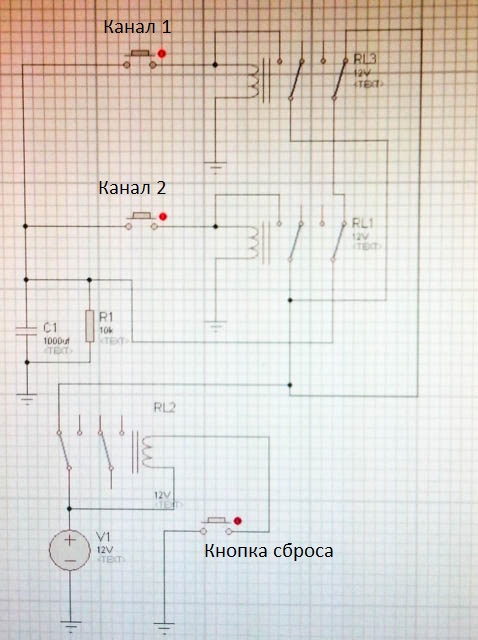
The relay used Chinese HUI-KE at 12 volts , standard prototyping board, plexiglass. Installation conducted the wire for cheating.
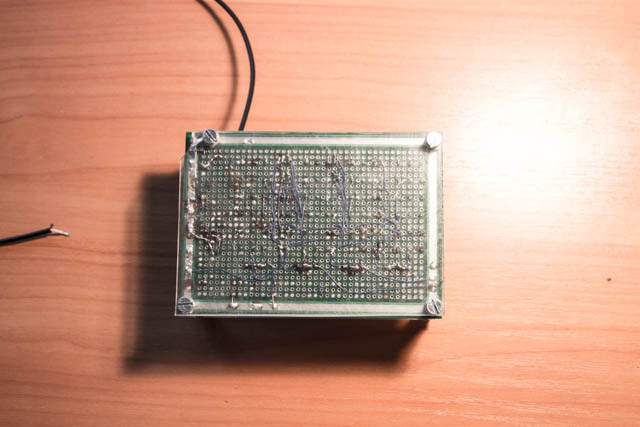
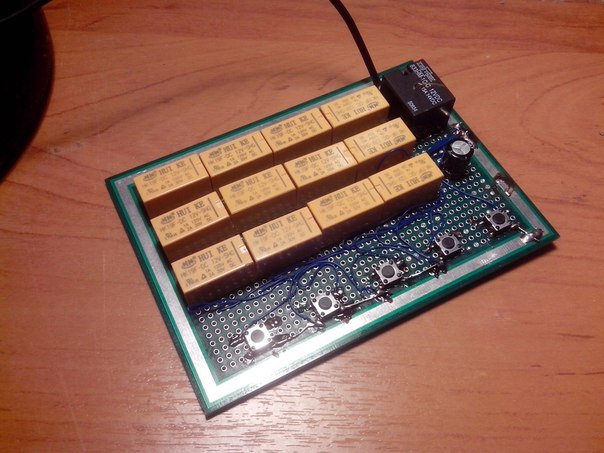
After almost a year :) I nevertheless completed the switch, and in the near future I will present it. That's what happened in the end.
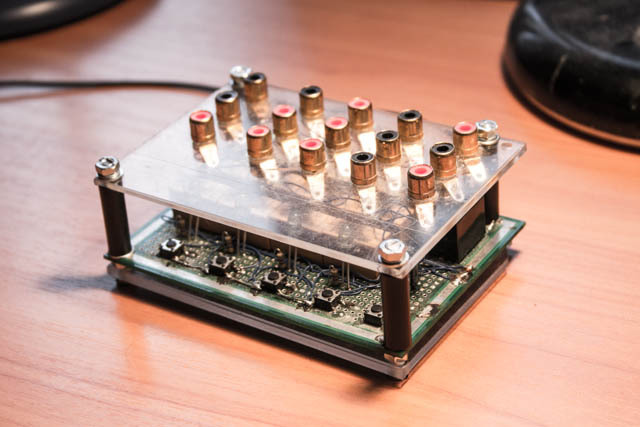
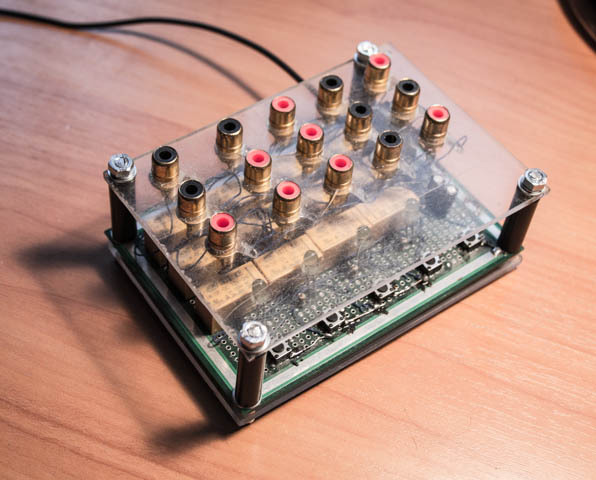
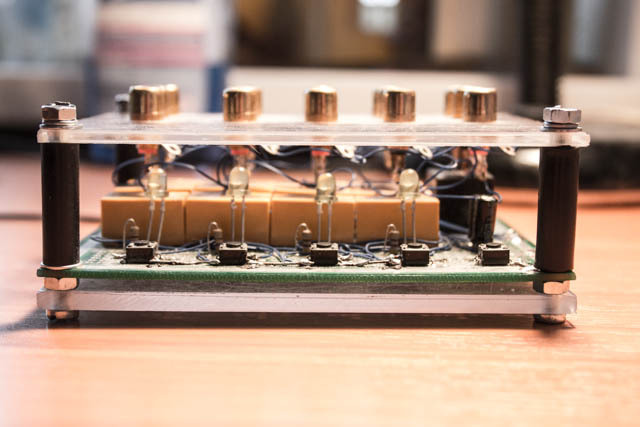
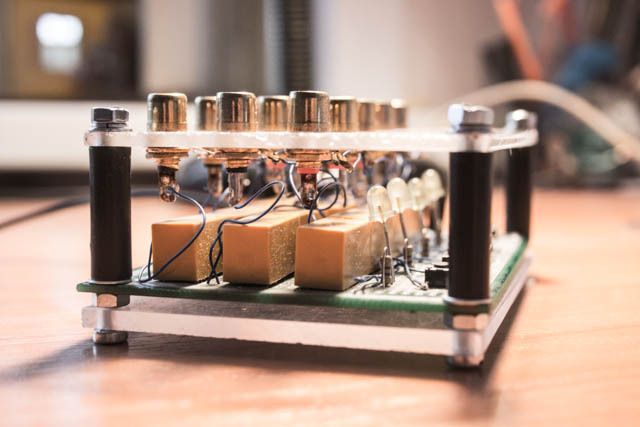
Video on how it works
Source: https://habr.com/ru/post/262393/
All Articles